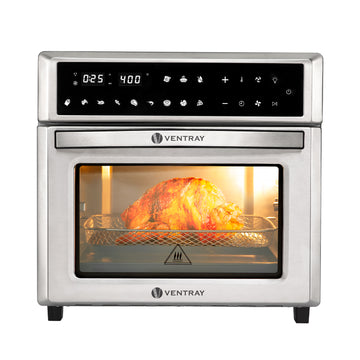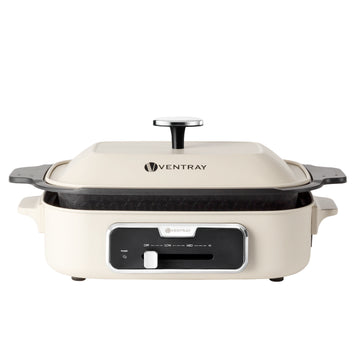Juicer vs Blender: Breaking Down the Pros and Cons
Juicer vs Blender: Breaking Down the Pros and Cons
Juicer vs Blender: Breaking Down the Pros and Cons
When it comes to making healthy drinks at home, two appliances often come to mind: juicers and blenders. Both are popular for preparing nutritious beverages, but they operate differently and offer unique benefits. Understanding the pros and cons of each can help you decide which one suits your lifestyle and dietary needs best. Let’s delve into the world of juicing with products from Ventray's collection of juicers and blending with the Ventray PRO600 Blender.
Juicers: Maximizing Nutrient Extraction

Pros
- Maximized Nutrient Extraction: Juicers, like the Ventray 900, are designed to extract the liquid content from fruits and vegetables, leaving behind the pulp. This process results in a concentrated juice that’s packed with vitamins, minerals, and enzymes.
- Easy Digestion: Juices are light on the digestive system, making them a great option for those with sensitive stomachs or for quick nutrient absorption.
- Variety and Creativity: Juicers allow you to experiment with a wide range of fruits and vegetables, creating unique combinations and flavors.
Cons
- Waste of Pulp: Juicing discards the fibrous pulp, which means you miss out on the valuable fiber that aids in digestion and satiety.
- Higher Sugar Concentration: Juices can have a higher concentration of sugars, especially from fruits, which might not be ideal for everyone, particularly those monitoring their sugar intake.
Blenders: Versatility and Fiber Retention

Pros
- Fiber Retention: The Ventray PRO600 Blender blends the whole fruit or vegetable, including the fiber. This helps in creating fuller, more satiating drinks.
- Versatility: Blenders are not limited to just smoothies. They can be used to make soups, sauces, and even dough, making them a versatile kitchen tool.
- Texture and Variety: Blenders allow you to create different textures, from smooth juices to thicker smoothies, and even frozen desserts.
Cons
- Bulkier Beverages: Blended drinks are often thicker and more filling, which might not be preferred by those looking for a light, refreshing beverage.
- Nutrient Oxidation: The blending process can introduce air, leading to oxidation of nutrients. However, this is often minimal and can be mitigated by consuming the drink soon after preparation.
Making Your Choice
When deciding between a juicer and a blender, consider your dietary goals and preferences. If you’re looking for nutrient-rich, easily digestible drinks, a juicer might be your best bet. However, if you prefer fiber-rich, versatile options, a blender could be more suitable.
Juicing and Blending Recipes
Juicing Recipe: Pear-Apple Bliss
Combine pears and apples in your Ventray juicer for a sweet, refreshing juice. This simple combination is perfect for a quick, nutritious drink.
Blending Recipe: Cucumber Green Smoothie
Blend cucumbers, spinach, and a bit of ginger in the Ventray PRO600 for a green smoothie that’s both healthy and delicious. It’s an excellent way to start your day or as a post-workout refreshment.
For more creative recipes, explore the Ventray recipe page, which offers a plethora of options for both juicing and blending.
For more insights on making healthy choices and understanding the benefits of different kitchen appliances, informative resources are available at sites like Healthline and Medical News Today. Remember, the right appliance can be a game-changer in your journey towards a healthier lifestyle.
Conclusion
Whether you choose a juicer or a blender, both are excellent tools for enhancing your diet with nutritious drinks. The key is to understand your personal health goals and choose the appliance that aligns with your lifestyle. With high-quality options like the Ventray 900 juicer and the Ventray PRO600 Blender, the possibilities for healthy, delicious beverages are endless.









